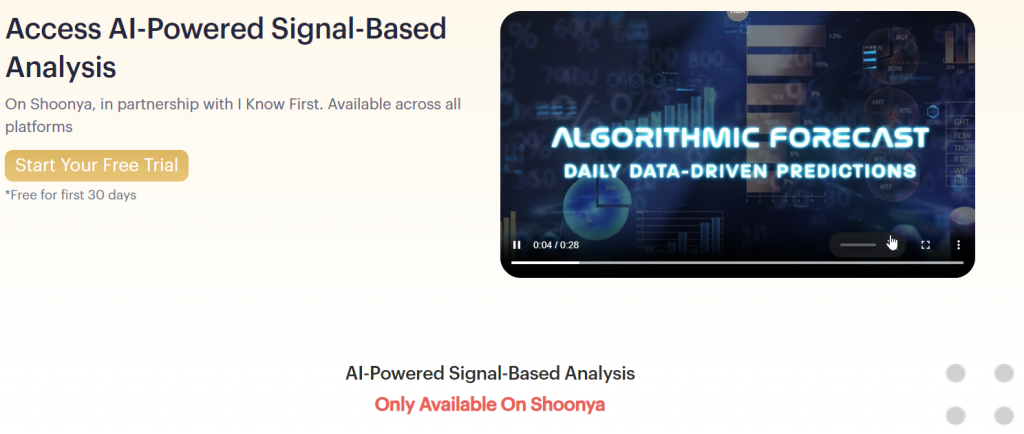Top 10 Tips To Select The Right Ai Platform For Trading Ai Stocks From Penny To copyright
It is essential to choose the right AI platform when trading penny stocks and copyright. Here are ten essential tips to help you decide:
1. Determine your trading goals
TIP: Choose your primary focus – penny stock, copyright, both – and also whether you’re interested in long-term investments, short-term trades, algorithm-based automated trading or automated.
What makes them different do different platforms excel in various areas. Clarity in your goals will allow you to select the best platform to meet your requirements.
2. Analyze Predictive accuracy
Examine the accuracy of predictions made by the platform.
How to find published backtests and user reviews as well as demo trading results to assess reliability.
3. Real-Time Data Integration
Tip: Ensure the platform has live market data feeds in real time particularly for assets that move quickly like penny stocks and copyright.
The delay in data can lead to miss opportunities as well as inadequate execution of trades.
4. Evaluate the possibility of customizing
Tips: Select platforms that allow custom strategies as well as indicators, parameters, and parameters to fit your trading style.
For instance, platforms such as QuantConnect and Alpaca provide a range of options for customization for technologically adept users.
5. Accent on Features for Automation
TIP: Search for AI platforms which have strong automated capabilities, including stop-loss features along with take-profit and trailing stops.
The reason: Automation reduces time and assists in executing trades in a precise manner, especially in markets that are volatile.
6. Evaluation of Sentiment Analysis Tools
TIP: Pick platforms that provide AI-driven sentiment analyses, especially for penny stocks and copyright that are influenced by news and social media.
What is the reason: Market sentiment is a significant factor in price movements that occur on a short-term basis.
7. Prioritize User-Friendliness
Check that the platform is easy to use and has clear documentation.
The reason: A steep learning curve can slow down your ability to trade.
8. Check for Compliance with the Regulations
Tip: See whether the platform complies to the regulations for trading in your region.
For copyright Find the features that support KYC/AML compliance.
If you’re investing in penny stocks, make sure that you follow the SEC or similar guidelines are followed.
9. Cost Structure Analysis
Tip: Understand the platform’s pricing–subscription fees, commissions, or hidden costs.
Why? A expensive trading platform could reduce profits if you are doing smaller trades with the penny stock market or copyright.
10. Test via Demo Accounts
Test out the platform using an account with a demo.
The reason: A test session can show whether the platform is up to your expectations in terms of capabilities and performance.
Visit Customer Support & Community
Tip: Choose platforms that have large and active user communities.
Why: Peer support can be an excellent method to test and improve strategies.
It is possible to find the platform that best suits your trading style by looking at platforms based on these guidelines. Check out the top rated more info about copyright ai for more examples including ai trader, trading ai, ai for stock trading, using ai to trade stocks, best ai stock trading bot free, ai copyright trading, ai stock trading app, stock analysis app, coincheckup, ai for trading and more.

Top 10 Tips For Combining Ai With Fundamental Analysis In Stock Pickers, Investments And Predictions
Combining AI to fundamental analysis will increase the accuracy of stock pickers and effectiveness and help them make better investment choices. Here are 10 tips to incorporate AI as well as fundamental analysis in order to make better predictions about the market and increase your investment.
1. AI Data Gathering and Processing
Make use of AI for the automated gathering, cleaning and analysis of essential data, such as financial statements and earnings reports.
The reason: AI can quickly sift through massive amounts of data and find patterns or important metrics, which can save time while ensuring that important information is not missed.
2. Incorporate Key Financial Ratios into AI Models
Tip. Feed AI algorithms to calculate the basic parameters of P/E, P/B and debt-to-equity, ROE, free cash flow, and so on.
Why: These ratios are used to evaluate the financial health and value of a business. AI can process these metrics more effectively by recognising patterns that may not be evident to humans.
3. AI Predictive Power, Fundamental Insights and Predictive Power: Combining the two
TIP: You can make use of AI to enhance the accuracy of the accuracy of your fundamental analysis. For instance, you can forecast the price of stocks using historical data as well as future-oriented fundamental metrics.
The reason: AI algorithms are more accurate and incorporate complicated patterns, variables and data than conventional models.
4. Automated Earnings Models and Valuation Methodologies
Make use of AI to improve or automate earnings estimates (such as Discounted Flow Models) by including historical and current information.
What’s the reason? AI models are able to be rapidly adjusted as new data is discovered, which leads to more accurate valuations of stocks and forecasts.
5. Integrate Macroeconomic Factors With Company Fundamentals
Use AI to combine macroeconomic indicators (interest rate and inflation and GDP) with micro-level information (company earnings and management quality, for instance). ).
The reason: AI is able to assess the effect that broad economic trends can have on the performance of a company. This can help you forecast the performance of stocks more accurately by understanding the external factors that can affect the company’s performance.
6. Make use of Natural Language Processing (NLP) for News and Earnings calls
Tips – Utilize NLP (non-linear processing) to blend non-structured data, like earnings call transcripts and social media with the company’s data.
The reason: NLP is a powerful tool that allows AI to extract insights and sentiments from the qualitative information. This gives more context to fundamental metrics. For instance, it can detect changes in management, or new challenges to the market that could affect future growth.
7. AI Real-time Processing and Long-Term Analyses
Tips: Make use of AI to monitor and analyze market data in real-time, while employing fundamental analysis to guide long-term investment decision-making.
Why: AI is able to provide rapid responses to changes in the market, while fundamental analyses provide a long-term view, creating an investment strategy with a balanced approach.
8. AI-Enhanced Screening Finds Opportunities Hidden
Tip Build AI models to automatically screen undervalued or inflated stocks, by combining fundamental metrics and market behavior.
What is the reason: AI can reveal hidden opportunities in investment by detecting of patterns in markets that are not apparent with traditional fundamental analysis techniques.
9. AI Insights for Risk Management: Fine-tune Risk Management
Tip: Use AI for risk management. Analyze the financial stability of a business and anticipate risks such as regulatory changes or liquidity issues based on the fundamentals of the company.
The reason: AI can assess risk dynamically and adjust your position, thereby protecting you from risk on the downside while maximizing value opportunities.
10. Re-evaluate models regularly with new information
Tips: To improve your forecasts and make adjustments to your stock picks Feed constantly updated financial data earnings data, macroeconomic indicators in to the AI system.
Reason: Because market conditions and financial data are constantly changing, you should constantly update your models in order to ensure that your stock picks stay relevant.
Bonus: Use AI to Automate Portfolio Rebalancing
Tip: Leverage AI to monitor your portfolio and make adjustments based on changes in the basic aspects of your investments, like when a company’s financial health declines or improves.
Why? AI can automate rebalancing of portfolios based on fundamental triggers. It helps maintain the optimal distribution of assets, without constant human intervention.
Combining AI with Fundamental Analysis can lead to an approach that is more data-driven in stock picking and investing. AI enhances the ability to process large quantities of data, recognize patterns, and adapt quickly to new information. Fundamental analysis can provide a solid base for long-term investment decisions. This approach is a hybrid that will allow you to make fast and informed investment decisions. View the recommended her comment is here for trading ai for site advice including trade ai, trade ai, copyright ai, penny ai stocks, trading with ai, ai investing platform, ai for trading stocks, ai penny stocks, ai in stock market, ai stock trading bot free and more.
